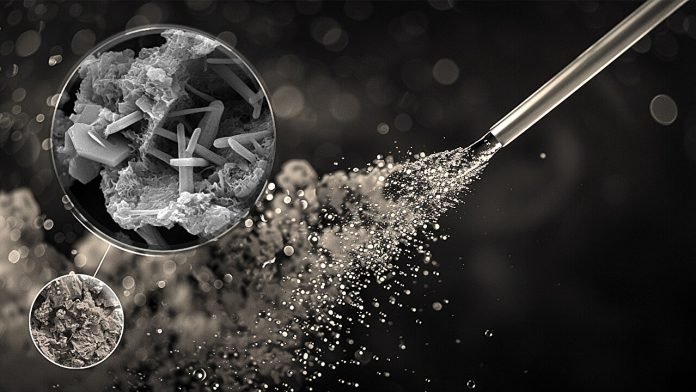
A team of engineers led by Northwestern University has found a new way to store carbon dioxide (CO2) in concrete, which is widely used in construction.
This new process not only helps reduce CO2 in the atmosphere but also maintains the strength and durability of the concrete.
The findings were published in Communications Materials.
The researchers discovered that using carbonated water, instead of still water, during the concrete manufacturing process allows the material to capture and store CO2 effectively.
In lab experiments, this method captured up to 45% of the CO2 injected during the process.
This could significantly help offset the CO2 emissions from the cement and concrete industries, which are responsible for 8% of global greenhouse gas emissions.
Traditional concrete is made by mixing water, sand, gravel, and cement. The new method involves injecting CO2 into water mixed with a small amount of cement powder before adding this carbonated water to the rest of the cement and aggregates.
This approach leads to concrete that absorbs CO2 during its manufacturing.
Alessandro Rotta Loria, the lead author of the study and an assistant professor at Northwestern, explains that this method creates a lower viscosity fluid, allowing faster and more efficient chemical reactions that form solid calcium carbonate minerals.
These minerals give the concrete its strength.
The new process results in concrete with strength and durability comparable to, or even better than, regular concrete. “In our experiments, the strength of the carbonated concrete was at least as good as regular concrete,” said Rotta Loria.
“This means it can be used for beams, slabs, columns, foundations, and everything else we currently use concrete for.”
Previous methods of storing CO2 in concrete had significant drawbacks. One approach involved placing hardened concrete blocks in high-pressure chambers with CO2 gas, while another involved injecting CO2 into the mixture during production.
Both methods were inefficient, energy-intensive, and often weakened the concrete.
The new method overcomes these issues by being more efficient and not compromising the strength of the concrete. “Our approach leverages a very fast kinetics of chemical reactions, resulting in a concrete product with a significant concentration of calcium carbonate minerals,” said Rotta Loria.
This research opens the door for the cement and concrete industries to become major players in reducing CO2 emissions.
Davide Zampini, a co-author of the study and vice president of global research and development at CEMEX, said, “This approach provides an opportunity to engineer new products where CO2 becomes a key ingredient.”
Rotta Loria adds, “We are developing approaches that lower CO2 emissions associated with cement and concrete industries. While we are not there yet, this new method is a significant step towards turning cement and concrete into massive ‘carbon sinks.'”
The study, “Storing CO2 while strengthening concrete by carbonating its cement in suspension,” supported by CEMEX Innovation Holding Ltd., demonstrates a promising new way to store CO2 in concrete without compromising its strength.
This innovative method could help reduce the environmental impact of one of the world’s most used construction materials.



